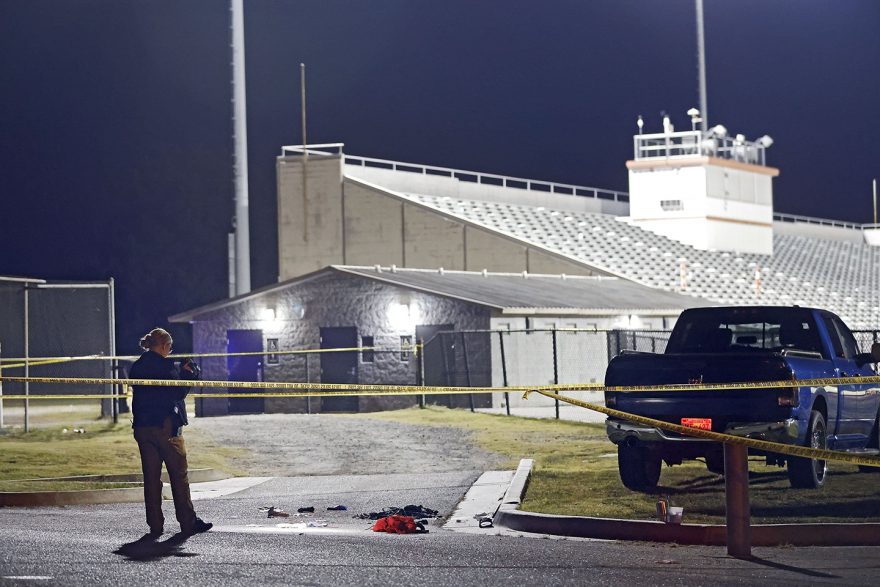Social-Emotional Learning as a Proactive Strategy for Curbing School Violence

The last few years have shown us how important it is that we collectively normalize and address conversations in mental health — -our own mental health, as well as the mental health of our families, friends, and communities. Especially in the aftermath of the tragic shooting in St. Louis at the Central Visual and Performing Arts High School, the mental health of school communities has been one of the most talked-about topics in education.
But as we approach the conversation of mental health after a global pandemic has uprooted our lives, after political and social discourse demands even more from overly-stretched schools, and after continued gun violence brings the nation to its knees in another horrific school shooting, I can’t help but wonder what kind of world we can create if we started these conversations before horrific acts occur.
There’s an unspoken tragedy underneath the mass shootings and acts of violence we’ve seen in our country lately, which is the mindset, isolation, and desperation of the teenagers who are committing them. How could someone so young do something so horrific? And how can teenagers be so indoctrinated towards violence without any intervention? In St. Louis, as well as Uvalde and also in Buffalo, hindsight seems to indicate that there were warning signs – from school absences to disturbing online behavior- and yet these young people continued to suffer alone until committing an unthinkable, destructive act.
As we continue to navigate how to process and respond to the kinds of violence we’re seeing on a daily basis in the United States, we need to continue to push the conversation around mental health towards proactive, preventative supports. Our schools need to lay a foundation that not only prepares students for independence and academic success, but also one that proactively builds students’ confidence, sense of self, sense of purpose, meaningful relationships, social skills, and sense of belonging, strengthening students’ social, emotional, and mental wellbeing.
Social-emotional learning is the proactive, preventative piece of supporting mental health. Building a common language around emotional vocabulary and regulation skills helps all members of a school community better identify and advocate for more intensive mental health support. SEL can mean the difference between a child going unnoticed when they don’t eat lunch in the cafeteria and a child getting one-on-one time with a counselor because a trusted adult knows that particular behavior is out of character. SEL can also be the difference between a teacher being able to redirect a student when they have an emotional response in class and sending that student to the administrator’s or counselor’s office, losing critical classroom learning time and filling the administrator or counselor’s day with something that could have been addressed with a simple emotional regulation strategy.
Mental health supports, like more licensed professionals on campus or partnerships with local mental healthcare providers, are better leveraged when schools are able to identify the students — and adults — that need more intensive support. Some of the most innovative districts in the country have formed partnerships with local healthcare providers, offering a ladder of support that ranges from counseling for educators and students to day treatment facilities and more intensive overnight care.
They’ve been able to build a comprehensive system of mental health support because they’ve been practicing social emotional learning for years, and their community has a framework for understanding and strengthening skills in emotional identification, expression, regulation, and overall wellbeing.
Tools to Identify Warning Signs
With the rise of violence happening in schools across the United States, SEL is the proactive, preventative solution to make sure all students have the tools they need to feel supported and cared for, and to make sure adults have the tools to step in when warning signs indicate a student needs more intensive support.
The data is clear. According to the Collaborative for Academic, Social, and Emotional Learning, 27 states have adopted K-12 SEL competencies and all 50 have adopted PreK SEL competencies. A meta-analysis that looked across 213 studies involving more than 270,000 students found that SEL interventions that address the five core competencies of self awareness, self management, social awareness, relationship skills, and responsible decision making increased students’ academic performance by 11 percentile points, compared with students who did not participate in SEL programs.
In addition, students participating in SEL programs showed improved classroom behavior, an increased ability to manage stress and depression, and better attitudes about themselves, others, and school. Its effects have been shown to be durable, cost-effective and successful across cultural contexts.
As we continue discussing how to improve our schools and strengthen our communities to prevent more tragedies, we need to include proactive, preventative social-emotional learning support in the conversation. Every school needs the infrastructure, resources, and adult capacity to nurture the social, emotional, and mental wellbeing of students and create a community where no one is able to be “at risk” without receiving the support they need.
Education is more than building cognitive skills, it’s about building better humans who can go on to be the best versions of themselves- as citizens, as leaders, as family members and friends, as professionals and as community members, building a more empathetic, connected, resilient world for our future.
Photo: A Tulsa, Okla., police officer films the area outside of the McLain High School football stadium after a shooting during a football game in September. Police say a teenager was killed and another wounded in a shooting at a homecoming football game.
Mike Simons/Tulsa World via AP
See also:
